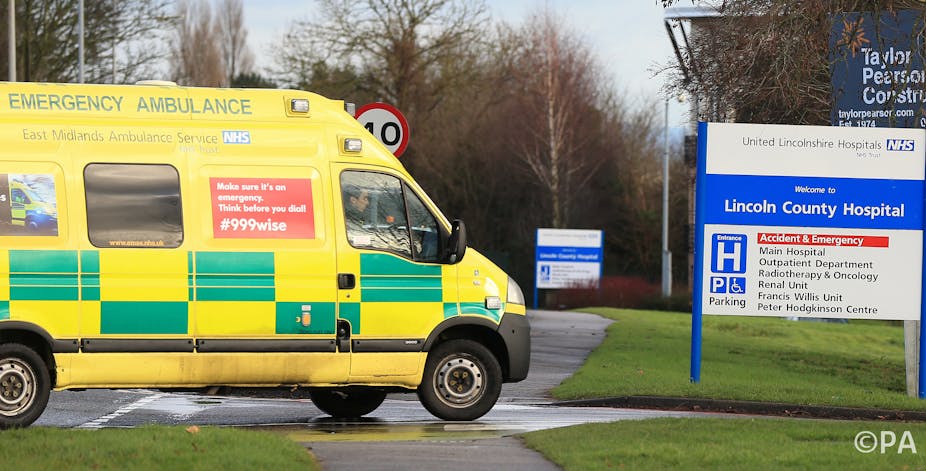Even A&E where the pressure is at its greatest, we are seeing and treating people faster than any country anywhere in the world that measures A&E performance.
Jeremy Hunt, health minister, speaking at the Health Debate election hustings, echoing comments he made in January on the NHS in England.
International definitions of health service performance are generally incomparable. All countries have systems that have evolved independently and have different descriptors of priority.
In many countries, access to emergency health care is achieved through the strength of the patient’s insurance or the contents of their wallet. A&E arrangements take significantly different forms internationally and many countries don’t have dedicated emergency medicine personnel. For example, in Germany and Sweden emergencies are treated by assorted specialists from around the hospital.
Systems are considerably different from the UK model, as outlined in the annex to a 2014 evidence report published by Monitor, the sector regulator for health services in England. Arrangements for 24/7 cover are common to Australia, some parts of Canada, the US and some Nordic countries, although these are often staffed by on call medical staff and not permanent cover. GPs also play a larger part in some countries, such as the Netherlands.

In citing the good performance of NHS waiting times, Jeremy Hunt is likely to be referring to this evidence report, which includes a graph showing that in comparison with Victoria in Australia, the Canadian province of Ontario and the city of Stockholm, a higher percentage of people in England left A&E within four hours.
It’s clear that this is not a comprehensive international comparison of the speed of A&E waiting times around the world.
It’s also worth pointing out that waiting times and targets vary around the UK. The BBC helpfully tracks the latest data on A&E waiting times in England, Wales, Scotland and Northern Ireland.
In England the expectation is that 95% of patients will be seen, assessed, admitted or discharged within four hours. In England, data on this target is released each Friday, and for the year to date, 92.7% of people in all A&E departments were seen within four hours. In Scotland, where the target is to see 98% of patients within four hours, for the month of February, 87.9% were seen and subsequently admitted, transferred or discharged within four hours.
In January in Wales, 82.3% met the 95% target, and in Northern Ireland, 74.8% were seen within four hours.
Verdict
Regrettably Jeremy Hunt is not comparing like with like in his comparisons so his assertion of international excellence on A&E waiting times is dubious.
Review
Jeremy Hunt’s statement is probably the only way to put positive spin on the English A&E waiting time figures. Even then there is little comfort in the claim because, as the author points out, few countries measure A&E performance as the NHS does. We should not be reassured by comparison with three regions elsewhere.
A&E performance in England has been deteriorating under the coalition. Labour introduced a target that no more than 2% of patients should wait more than four hours in A&E from arrival to admission, transfer or discharge. From 2005, this target was usually met, though A&E departments struggled over the winter. The coalition relaxed the target to 5%, but even this less demanding target was not met this winter.
A&E departments take the pressure when other parts of the system aren’t working properly. People turn to A&E if their social care support has been cut back, or they can’t get a GP appointment, or because the new 111 service advises more people to go to A&E than the old NHS Direct did.
Patients stay in A&E longer than necessary because there aren’t enough consultants willing to work in this stressful environment and because hospital beds are filled with patients facing delayed discharge because social care support has been cut.
A&E departments are at the centre of a complex system but past calls to address the A&E crisis have gone unheeded. The problems are simply getting worse. – Andrew Street
Click here to request a check. Please include the statement you would like us to check, the date it was made, and a link if possible. You can also email factcheck@theconversation.com

